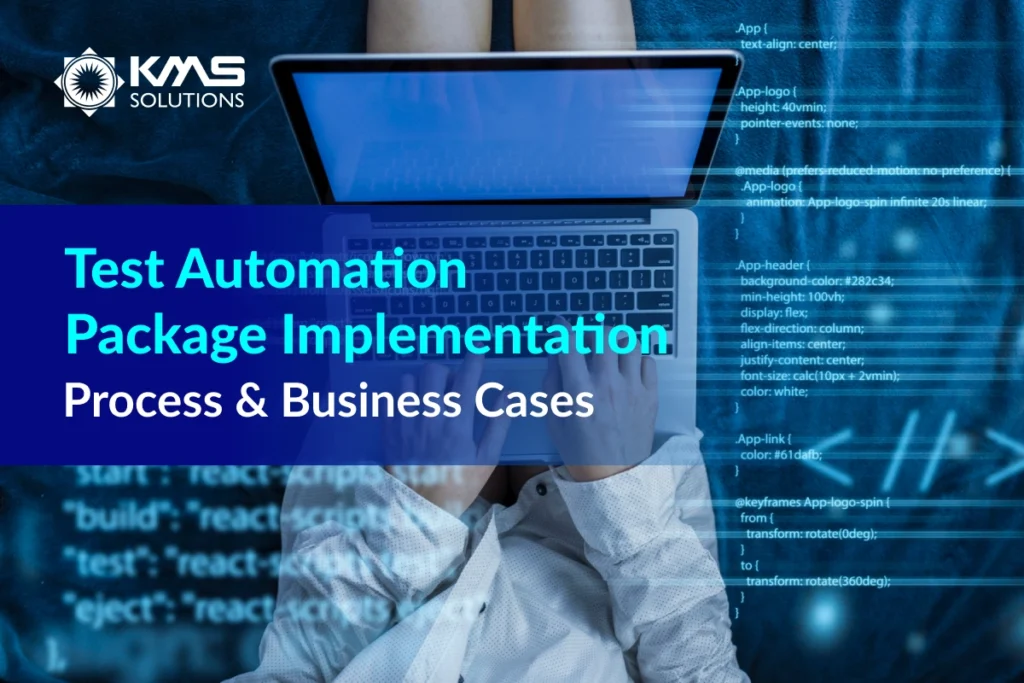In today’s digital economy, businesses rely heavily on APIs (Application Programming Interfaces) to connect services, streamline operations, and enhance customer experiences. Nonetheless, guaranteeing the impeccable operation of these APIs presents a formidable challenge. This is where API automation testing comes into play, offering a structured approach to verify that APIs perform as expected under various conditions.
Today, we’ll explore the essential aspects of API Automation Testing: innovative techniques, review top-tier tools and best practices. This guideline is expected to help businesses accelerate development cycles, reduce downtime, and deliver superior products and services to their customers!
1. What is API Automation Testing?
API automation testing is a type of software testing that focuses on verifying that application programming interfaces (APIs) function as expected. Unlike traditional user interface (UI) testing, which tests the graphical elements of an application, API testing is conducted at the middle layer of application.
This form of testing ensures that the response and request of an API call behaves correctly as system design , handles the specified data formats and types, and performs well under various conditions. Automated testing of APIs can identify defects early in the development cycle, ensuring that integrations between systems are reliable.

2. Why is API Automation Testing Important?
Modern software architectures rely heavily on APIs, which facilitate smooth interaction and data exchange between various components and systems. The following benefits highlight the importance of API test automation, giving you a broader perspective on its significance:
- Early Defect Detection: API testing allows defects to be identified early in the development process, making them easier and less costly to fix.
- Efficiency and Speed: Compared to manual testing, automated API tests can run more quickly and repeatedly.
- Contract Testing: This ensures that the integration between the API and the interface layer adheres to the agreed-upon specifications, verifying that the contract between each component of the application functions as expected.
- Interoperability: Through automation test cases, it ensures that APIs can integrate with third-party services and platforms, enhancing the overall functionality of the application.
- Continuous Integration and Delivery (CI/CD): Automated API testing integrates seamlessly with CI/CD pipelines, enabling continuous testing and faster delivery of high-quality software.

3. How to perform API automation tests?
Thorough validation of an API’s functionality through automation testing involves several essential steps and components:
- Test Planning: The process begins with defining test cases that cover a range of scenarios, including positive and negative test cases, edge cases, and performance tests. This stage also involves specifying the test data needed, including input parameters and expected outputs.
- Set Up Test Environment: The test environment must be properly configured including test servers, databases, and any required dependencies. Ensure that the test environment mirrors the production environment as closely as possible.
- Set Up API: This step involves preparing the API for testing, ensuring it is accessible, and that any necessary authentication, authorization, or configuration settings are in place.
- Select API testing tools: Choose appropriate tools and frameworks that support API testing, such as Katalon, SoapUI, RestAssured, or JMeter, depending on the specific requirements of the API and the testing objectives.
- Write Test Scripts: Automation scripts are developed using the chosen tools to automate the execution of test cases. These scripts send requests to the API, capture responses, and compare the results against expected outcomes.
- Execute Tests: The automated test scripts can run automated tests or be integrated into a continuous integration/continuous deployment (CI/CD) pipeline.
- Reporting and Analysis: After executing the tests, we can examine the final reports that provide detailed insights into the test results, highlighting passed and failed tests, error messages, and performance metrics.
- Maintenance and update: As the API evolves, it’s crucial to update the test scripts to reflect changes, add new test cases to expand test coverage, and maintain the automation framework to ensure continued accuracy and relevance in testing.
4. Key Considerations of API Automation Testing
Now that we know why API automation testing is so important, let’s look at some key concepts to make it work well. Just like a strong foundation supports a building, effective API testing needs solid frameworks, the right tools, and suitable programming languages.
4.1 Frameworks for API Test Automation

Frameworks for API test automation provide essential tools, libraries, and guidelines that streamline the process of writing and executing tests effectively. These frameworks create a consistent testing method, making it easier to manage and expand as the application develops.
Popular tools and frameworks for API automation testing include:
- Postman: Famous for its ease of use and powerful functionalities.
- RestAssured: A Java-based framework that simplifies testing REST APIs.
- General-purpose testing frameworks: JUnit and TestNG can be extended for API testing with appropriate libraries. Additionally, specialized tools like the Katalon API automation testing tool offer comprehensive solutions tailored specifically for API testing. As a partner of Katalon, KMS Solutions offers these API testing solutions to help banks and financial institutions meet the stringent standards required for their operations.
4.2 Programming Languages for API Test Automation

The choice of programming language for API test automation can significantly impact the ease of writing and maintaining tests. Ideally, the chosen language should align with the team’s skills and the application’s tech stack.
Common programming languages used for API test automation include Java, JavaScript, Python, and Ruby. Each language has its strengths, and the choice often depends on the existing skills within the team and the specific requirements of the project.
4.3 Selecting the Appropriate Automation Tool
When selecting an automation tool, several factors must be considered to ensure it meets the project’s needs.
- User-friendly: The tool should have an intuitive design and demand minimal setup for quick implementation.
- Language support: The tool should support the programming languages used by the development and testing teams to ensure smooth collaboration.
- Integration capabilities: The tool should integrate well with other tools in the development and testing ecosystem, such as CI/CD tools, version control systems, and reporting tools.
- User interface testing integration: The tool should be easily integrated with user interface testing to enhance the effectiveness and accuracy of automated test scenarios.
Additionally, having a strong community and good vendor support can help in troubleshooting issues and maximizing the tool’s potential.
4.4 Measuring API Performance Indicators
In API automation testing, key performance indicators (KPIs) are used to evaluate performance and impact. KPIs such as effective pass rate and outlier rate reveal how often the API meets or falls short of expected performance standards:
- Pass Rate: Percentage of successful tests, indicating overall API reliability.
- Median Latency: Time taken for API responses, reflecting user experience.
- DNS Lookup Time: The duration of resolving domain names affects the initial request speed.
- Outlier Rate: Frequency of abnormal response times or errors, highlighting performance issues.
- Effective Pass Rate: Adjusted pass rate considering API complexity and dependencies.
- CASC Score: Customer API Service Quality score, assessing service quality from a user perspective.
5. Best Practices for API Automation Testing
5.1 Defining a Solid Test Strategy
Defining a Solid Test Strategy involves creating a comprehensive plan that outlines the scope, objectives, and methods for testing APIs. A well-defined strategy helps in systematically approaching API testing.
There are several elements that contribute to a test strategy, for example:
- Scope Definition: Clearly outline what will be tested, including endpoints, scenarios, methods, and data types.
- Test Objectives: Set clear goals for what the testing aims to achieve.
- Types of Tests: Determine the types of tests to be performed, such as functional, component, and regression tests.
- Tool Selection: Choose appropriate tools for API testing.

5.2 Parameterize Tests
Parameterizing tests involves using variables instead of hard-coded values in your test scripts. Tests can be reused with different data sets, reducing the need for writing new test cases for each scenario. For instance, a login API test can be parameterized to test multiple username-password combinations.

5.3 Integrating API Tests into CI/CD Pipelines
Incorporating API tests into CI/CD pipelines allows for automatic testing whenever there are code changes. This practice helps in identifying and fixing issues early in the development cycle.
It’s essential to use tools and frameworks that support automated testing and integrate smoothly with your CI/CD platform.

5.4 Selecting An API Testing Tool That Aligns With Your Workflow
Selecting the right APIs is critical. Start by identifying the specific functionalities you need, such as payment processing, customer verification, or data analytics. Once chosen, plan your architecture to ensure seamless integration. This includes deciding where the API will fit within your system, how data will flow, and ensuring there is minimal disruption to existing services.
6. Tools for API Automation Testing
6.1 Katalon
Katalon is a versatile test automation tool that supports both web and API testing. It is known for its ease of use, even for testers with minimal programming experience.
Katalon has over 1 million users globally and is trusted by top companies like NASA, Nike, and Intel.
Key features:
- Integrated Test Environment: Offers an all-in-one platform for creating, managing, and executing automated tests.
- Data-Driven Testing: Facilitates running multiple test iterations with varying data sets.
- Integration with UI Automation: Confirms accurate test scenarios through seamless integration with user interface automation.
6.2 SoapUI
SoapUI is a widely-used open-source tool specifically designed for API testing. It supports SOAP and RESTful web services.
Key Features:
- Comprehensive Testing: Offers functionalities for functional testing, load testing, and security testing of APIs.
- User-Friendly Interface: Simplifies the creation and execution of complex test cases by the drag-and-drop interface.
- Extensible: Enables advanced test case creation and automation through Groovy scripting.
6.3 Eggplant
Eggplant is used by leading organizations such as GE, Samsung, and Citrix, boasting a strong market presence in various industries.
Key Features:
- AI-Driven Testing: Utilizes artificial intelligence to enhance test creation and execution.
- Cross-Platform Testing: Supports testing across multiple platforms and devices.
- Robust Reporting: Provides detailed analytics and reporting to track test performance and outcomes.
6.4 Postman
- Interactive API Exploration: Allows users to manually test and explore APIs with a user-friendly interface.
- Automated Workflows: Facilitates the creation of automated test scripts and workflows to streamline API testing.
- Advanced Testing Capabilities: Includes features for environment management, variable handling, and script execution.
7. Challenges and Solutions in API Automation Testing
Despite its importance, testers often face significant hurdles that can impact efficiency and accuracy. Here, we examine the primary challenges faced in API automation testing and provide actionable solutions to mitigate them.

7.1 Data Dependency
Challenges: APIs often rely on dynamic and sometimes unpredictable data, making it difficult to maintain consistent and stable test environments. According to a survey by SmartBear, 55% of API testers identified data dependency as a significant challenge in their testing processes. Data dependency can lead to flaky tests that produce unreliable results.
Solutions:
- Utilize data virtualization tools to create synthetic data environments that mimic real-world scenarios.
- Employ data-driven testing strategies to separate test logic from the data being tested.
7.2 Performance Testing
Challenges: APIs must perform well under various load conditions, but accurately simulating these conditions and measuring performance can be challenging. 76% of enterprises reported performance issues with their APIs, highlighting the need for robust performance testing (CA Technologies).
Solutions:
- Use load testing tools like JMeter to simulate different traffic patterns and analyze API performance under stress.
- Integrate performance testing into the continuous integration/continuous deployment (CI/CD) pipeline to ensure regular performance evaluations.
7.3 Integration with CI/CD Pipelines
Challenges: Integrating API tests with CI/CD pipelines can be complex, particularly when dealing with multiple environments and configurations.
Solutions:
- Choose API testing tools that offer seamless integration with popular CI/CD platforms such as Jenkins, GitLab, and CircleCI.
8. Future Trends in API Automation Testing
API automation testing is an evolving field that adapts to the changing landscape of software development. As technology advances, new trends emerge that shape the way APIs are tested and maintained.
- Artificial Intelligence: Artificial Intelligence (AI) and Machine Learning (ML) are increasingly being integrated into API testing tools. These technologies can significantly enhance the efficiency and accuracy of testing processes by automating complex tasks and providing predictive analytics.
- Continuous Testing in DevOps: The State of DevOps Report 2023 by Puppet Labs found that organizations with mature DevOps practices were 5 times more likely to implement continuous testing, leading to a 55% reduction in deployment failures and a 20% increase in deployment frequency.
- Shift-Left Testing: Fixing defects earlier in the development process is significantly cheaper than addressing them after deployment. Shift-left testing helps in minimizing these costs.

9. Conclusion
Overall, the transition to automated API testing can be complex, involving various considerations such as tool selection and integration into your existing workflow. To streamline this process and achieve optimal results, expert guidance and support can be invaluable.
KMS Solutions offers specialized services in API automation testing designed to help organizations navigate this transition smoothly. Their team of experts provides customized solutions that align with your specific needs. From selecting the right tools to implementing comprehensive testing frameworks, KMS Solutions brings a wealth of experience to support your automation efforts.










